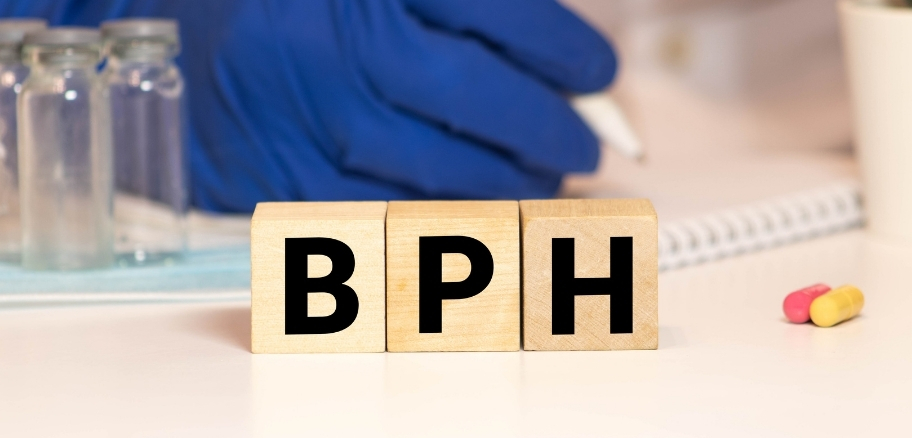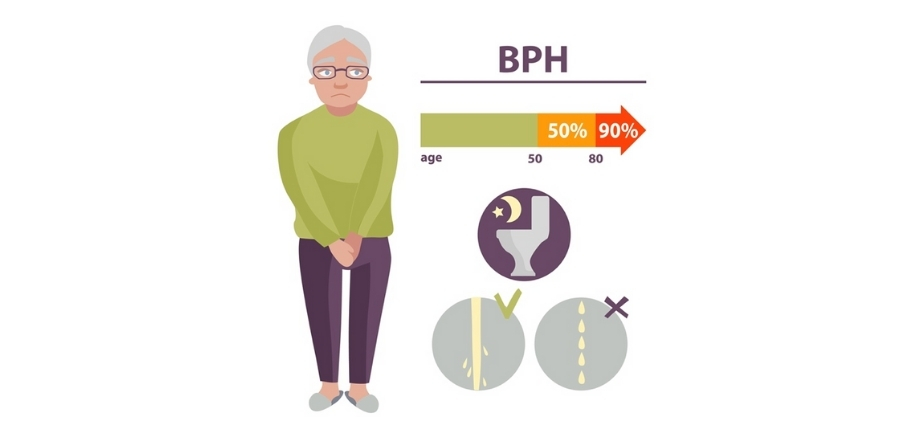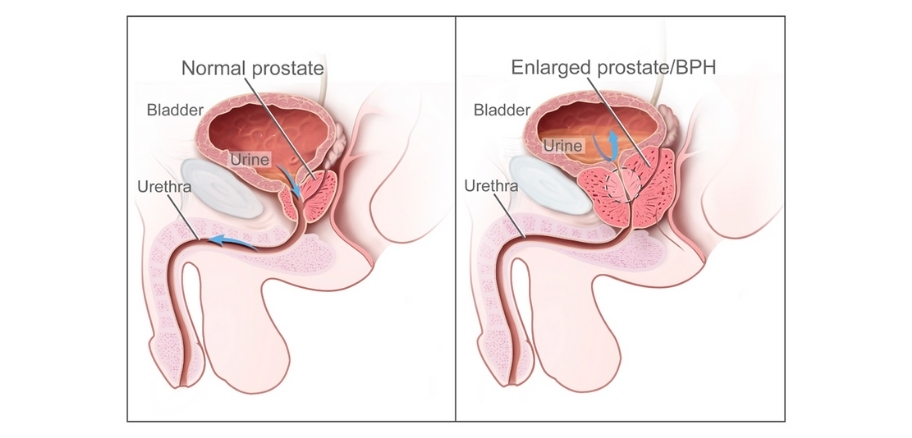What is BPH?
category: Health Optimization

Every year, 2 million men visit their doctors for complaints of benign prostatic hyperplasia (BPH) AKA, an enlarged prostate. Trouble urinating, frequent trips to the restroom, waking up in the middle of the night to urinate, lower urinary tract symptoms will all without a doubt, impact a man’s day to day routine and overall quality of life. If you are experiencing symptoms, you are NOT alone! Approximately 40-50% of men aged 51 to 60 and 90% in men older than 80 years old are affected.

So what is a prostate, anyway? The prostate is a small, male reproductive organ about the size of a walnut located in front of the rectum and behind the bladder. If you’re a male reading this sitting down, you’re sitting on your prostate right now. The primary function supports sperm in ejaculate fluid that’s necessary for sperm to find an egg for reproduction. Unlike most other organs in the body, the prostate actually continues to grow throughout life and for some men will cause health issues.
Due to its location, enlargement puts physical pressure on its surrounding neighbor organ, the bladder. This pressure results in constriction of the urethra causing urination issues such as a weaker stream, longer time to fully empty and frequent urination. It can even cause changes to the bladder itself causing the bladder to change in shape, which could be detrimental. Prostate enlargement causes the muscle surrounding the bladder to work harder and scar tissue can begin to develop. Eventually, if it is left unchecked for too long, you can end up with a bladder that doesn’t contract very well and would need to be corrected surgically.

Prevention is tricky as there aren’t many options to avoid BPH for some men. Age itself is the main risk factor. Additionally, family history increases risk. Men in the obese population who lose weight have shown improvement in lower urinary tract symptoms, which suggests body composition may be relative in prevention. As always recommended, effort to maintain a healthy, active lifestyle is important!
Thousands of prescriptions are written yearly to address BPH that have a fair amount of side effects and only shown to be about 40% effective in the long-term management of the problem! Around 400,000 prostate surgeries are performed annually with an estimate of $2 billion annually in medical treatments for BPH.
Living a healthy lifestyle can help manage symptoms along with a supplement to work on all facets of this condition. Supplements that can help with symptom management include researched ingredients:
Flowens – Cranberry fruit has been clinically proven to improve lower urinary tract symptoms
Saw Palmetto Extract – inhibits 5-alpha reductase (the enzyme that reduces testosterone to DHT), relieves swelling of the prostate gland and helps maintain healthy fluid balance in prostate tissues. Improves hair loss and growth by blocking DHT.
Beta-Sitosterol – A plant fat that alleviates prostate discomfort, urinary flow improvement and decreased residual urine in the bladder.
Pygeum Extract – African cherry tree that contains phytosterols, which exhibit anti-inflammatory action in the prostate.
Zinc – Supports immune health and inhibits aromatase-based conversion of testosterone into estrogen. High levels of zinc in the prostate gland have been shown to be an essential factor in preventing the initiation of cancer in prostate cells.
If you are experiencing any symptoms discussed in this post and want to trial a supplement containing all ingredients in one formula, contact 618-632-9000 (O’Fallon, Illinois clinic) or 314-833-9000 (Town and Country, Missouri clinic).
References
Pohlman, Garrett, M.D. (Host) & Brantley Thrasher, J, M.D. (2021, August 26). So What is a Prostate Anyway? (No. 76) In The Prostate Health Podcast.
Pohlman, Garrett, M.D. (Host) & Terlecki, Ryan M.D. (2020, December 2020). Benign Enlargement of the Prostate (BPH): How Can a Little Gland Cause So Much Trouble (No. 41) In The Prostate Health Podcast.